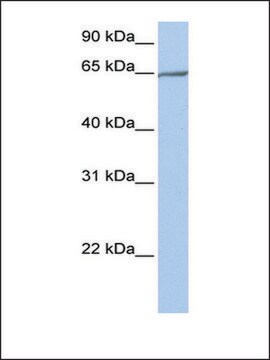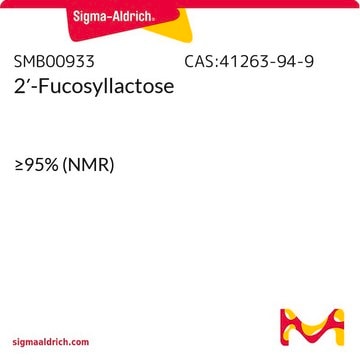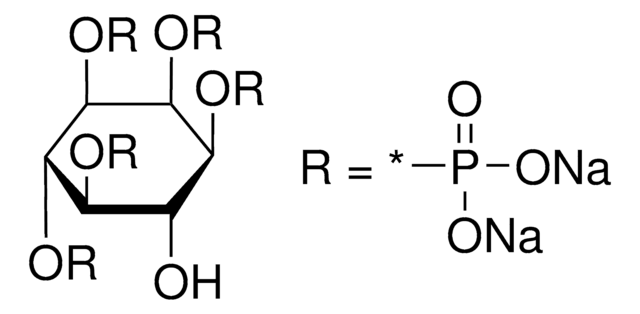B1422
B-Trisaccharide
Synonym(s):
α-D-Gal-(1→3)-(α-L-Fuc-[1→2])-D-Gal, Blood group B trisaccharide
About This Item
Recommended Products
Assay
≥95% (H-NMR)
Quality Level
form
solid
storage temp.
2-8°C
SMILES string
C[C@@H]1O[C@@H](O[C@H]2C(O)O[C@H](CO)[C@H](O)[C@@H]2O[C@H]3O[C@H](CO)[C@H](O)[C@H](O)[C@H]3O)[C@@H](O)[C@H](O)[C@@H]1O
InChI
1S/C18H32O15/c1-4-7(21)10(24)12(26)17(29-4)33-15-14(9(23)6(3-20)30-16(15)28)32-18-13(27)11(25)8(22)5(2-19)31-18/h4-28H,2-3H2,1H3/t4-,5+,6+,7+,8-,9-,10+,11-,12-,13+,14-,15+,16?,17-,18+/m0/s1
InChI key
XNBZPOHDTUWNMW-OUUCXATCSA-N
Storage Class Code
11 - Combustible Solids
WGK
WGK 3
Flash Point(F)
Not applicable
Flash Point(C)
Not applicable
Personal Protective Equipment
Choose from one of the most recent versions:
Already Own This Product?
Find documentation for the products that you have recently purchased in the Document Library.
Articles
O-Linked glycoproteins are usually large proteins with a molecular mass of >200 kDa. Glycosylation generally occurs in high-density clusters and may represent as much as 50-80% of the overall mass.
O-Linked glycoproteins are usually large proteins with a molecular mass of >200 kDa. Glycosylation generally occurs in high-density clusters and may represent as much as 50-80% of the overall mass.
O-Linked glycoproteins are usually large proteins with a molecular mass of >200 kDa. Glycosylation generally occurs in high-density clusters and may represent as much as 50-80% of the overall mass.
O-Linked glycoproteins are usually large proteins with a molecular mass of >200 kDa. Glycosylation generally occurs in high-density clusters and may represent as much as 50-80% of the overall mass.
Active Filters
Our team of scientists has experience in all areas of research including Life Science, Material Science, Chemical Synthesis, Chromatography, Analytical and many others.
Contact Technical Service








